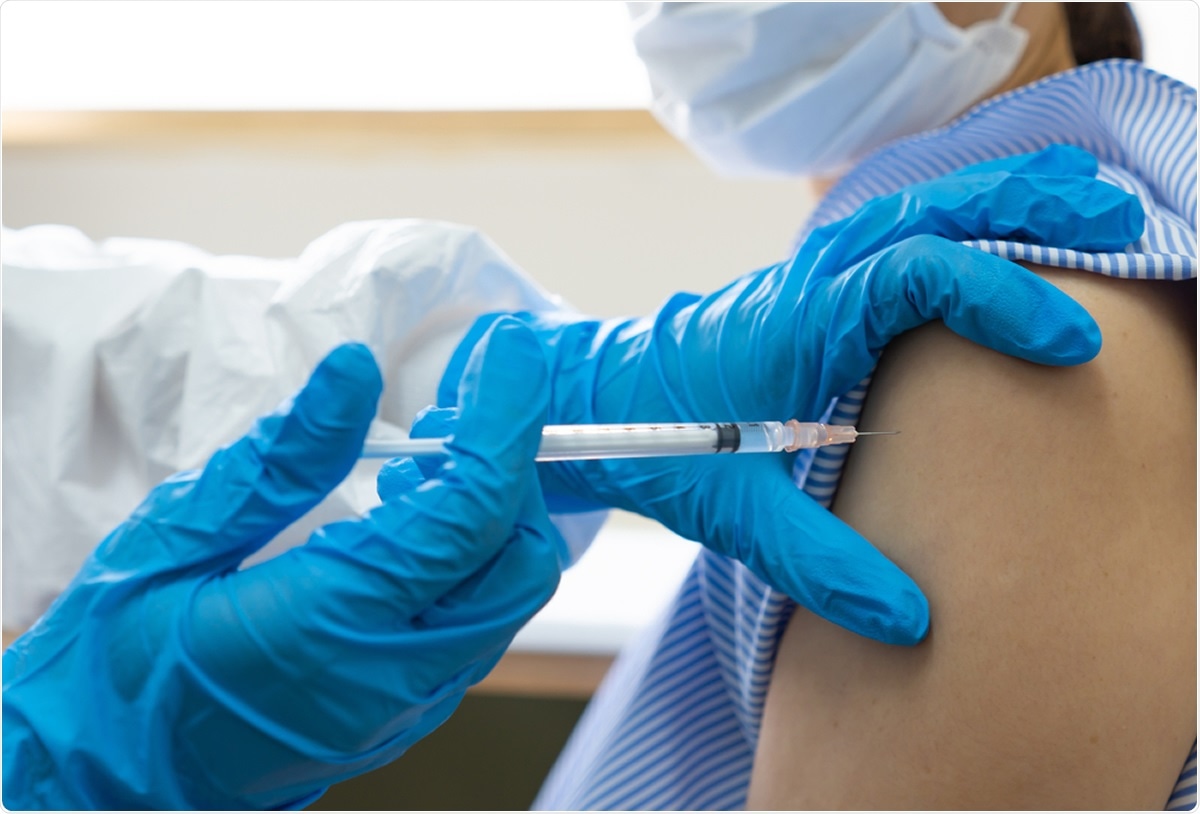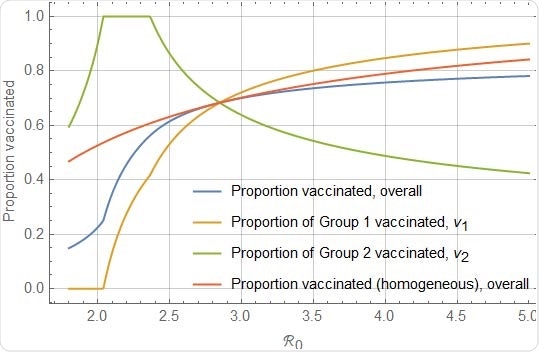A model of vaccine-derived herd immunity against COVID-19 in heterogeneous populations

A recent theoretical paper, currently available on the medRxiv* preprint server, unveils a novel vaccination model that shows how a herd immunity threshold (HIT) value which considers heterogeneity is substantially lower in comparison with a HIT value of assuming a homogeneous population – with many implications for further vaccination planning.

Since the start of the ongoing and devastating coronavirus disease 2019 (COVID-19) pandemic, one of the most pertinent issues raised by the global research and public health community was the fraction of susceptible population that will have to be immunized to halt the pandemic successfully. This intensified after several vaccines became available to different countries.
One of the metrics commonly used is the HIT vaccination coverage dependent on the basic reproduction number (i.e., the highly quoted R0), the latter being an average count of secondary infections caused by an infected individual when confronted with a completely susceptible population while he/she is infectious.
For example, when the R0 is 2.5, we need to immunize more than 60% of individuals to achieve HIT to eliminate the disease from the population. Nevertheless, this derivation is dependent on several assumptions in regards to the population characteristics and vaccine properties.
More specifically, it predisposes that the vaccine protection will be perfect and last lifelong, without waning efficacy observed with other vaccines. Can we then apply such clean calculations in ideal circumstances to somewhat unpredictable, real-world scenarios?
Without applying meticulous mathematical analysis, some have suggested that (assuming a homogeneous population) the classical vaccine-induced HIT can be substantially higher than the minimum HIT obtained when population heterogeneity is considered.
Dr. Elamin H. Elbasha from the Merck & Co., Inc. in Kenilworth (USA) and Dr. Abba B. Gumel from the Arizona State University in Arizona (USA) and the University of Pretoria (South Africa) have decided to investigate the aforementioned claim by developing and rigorously testing a vaccination model that includes different forms of heterogeneity, and subsequently comparing it with a model of a homogeneous population.

Modeling the optimal vaccination approaches
By utilizing a two-group vaccination model in heterogeneous populations, these researchers have theoretically discerned the conditions where heterogeneity can result in many different HIT values – which depends on the relative contact rates for groups, their size and the type of mixing between them, as well as relative vaccine efficacy.
For example, in instances of biased random mixing, and in cases when vaccinating a certain group gives rise to the disproportionate prevention of higher transmission rates, an optimal approach would be to vaccinate that exact group before starting with vaccinating other groups.
Furthermore, under the assumption of biased assortative mixing, the researchers have also found situations where it is optimal to vaccinate more than one group to achieve the optimal results. All of this is substantiated by many reproducible calculations.
Heterogeneity and lower HIT value
In a nutshell, the theoretical results for a two-group model developed by these two researchers suggest that deriving the vaccine-induced herd immunity threshold when the heterogeneous population model is taken into account is much more cumbersome than for the model with a homogeneous population.
Moreover, they have shown that population heterogeneities tend to result in much lower HIT values in comparison to the homogeneous population case. This was found to be valid under both proportionate and other types of mixing among heterogeneous populations.
By using realistic numerical examples and assuming biased assortative mixing with vaccine efficacy of 95% and basic reproduction number of 2.5, they have demonstrated that the HIT value considering heterogeneity can be significantly lower (40%) when compared with a HIT value assuming a homogeneous population (63%).
A blueprint for future studies
Naturally, when discussing their results, we have to consider that variables such as basic reproduction number and especially vaccine efficacy cannot be strictly seen as fixed, so the results have to be interpreted with caution.
And although this analysis utilized a two-group model, the findings can be broadened to include models of multiple groups. Likewise, rigorous analyses of models with many heterogeneous groups (which are more realistic) can be performed by using the methods included this paper.
In any case, modeling studies akin to this one are proving to be indispensable, especially since vaccinations are not progressing at the desired pace around the world. Reaching vaccine-induced herd immunity is one of the holy grails in our fight against COVID-19.
*Important Notice
medRxiv publishes preliminary scientific reports that are not peer-reviewed and, therefore, should not be regarded as conclusive, guide clinical practice/health-related behavior, or treated as established information.
- Elbasha, E.H. & Gumel, A.B. (2021). Vaccination and herd immunity thresholds in heterogeneous populations. medRxiv. https://doi.org/10.1101/2021.02.26.21252553, https://www.medrxiv.org/content/10.1101/2021.02.26.21252553v1
Posted in: Child Health News | Men's Health News | Medical Research News | Women's Health News | Disease/Infection News
Tags: Coronavirus, Coronavirus Disease COVID-19, Efficacy, Pandemic, Public Health, Reproduction, Research, SARS-CoV-2, Vaccine

Written by
Dr. Tomislav Meštrović
Dr. Tomislav Meštrović is a medical doctor (MD) with a Ph.D. in biomedical and health sciences, specialist in the field of clinical microbiology, and an Assistant Professor at Croatia's youngest university – University North. In addition to his interest in clinical, research and lecturing activities, his immense passion for medical writing and scientific communication goes back to his student days. He enjoys contributing back to the community. In his spare time, Tomislav is a movie buff and an avid traveler.
Source: Read Full Article